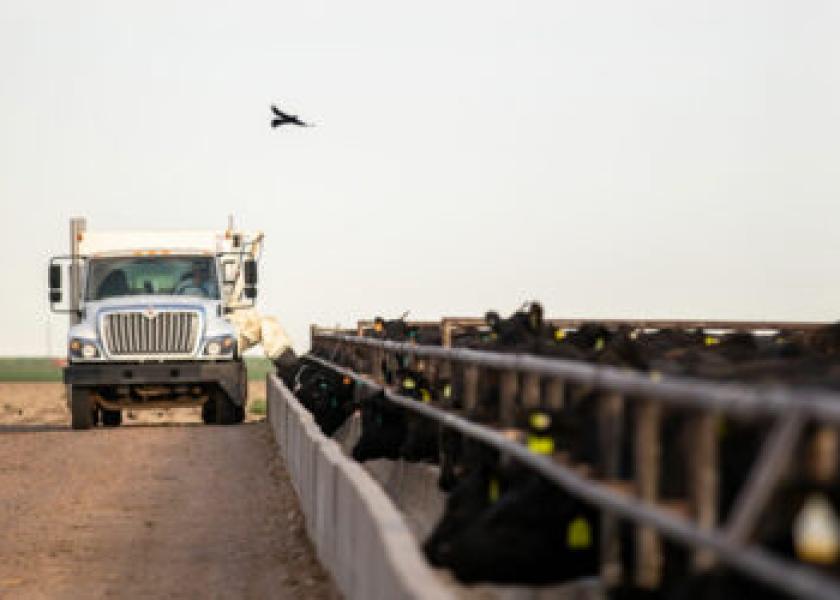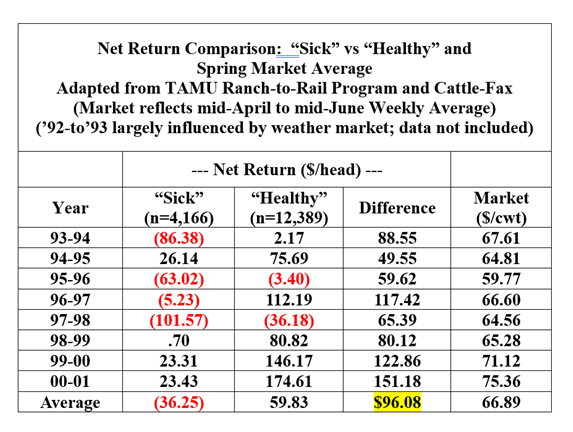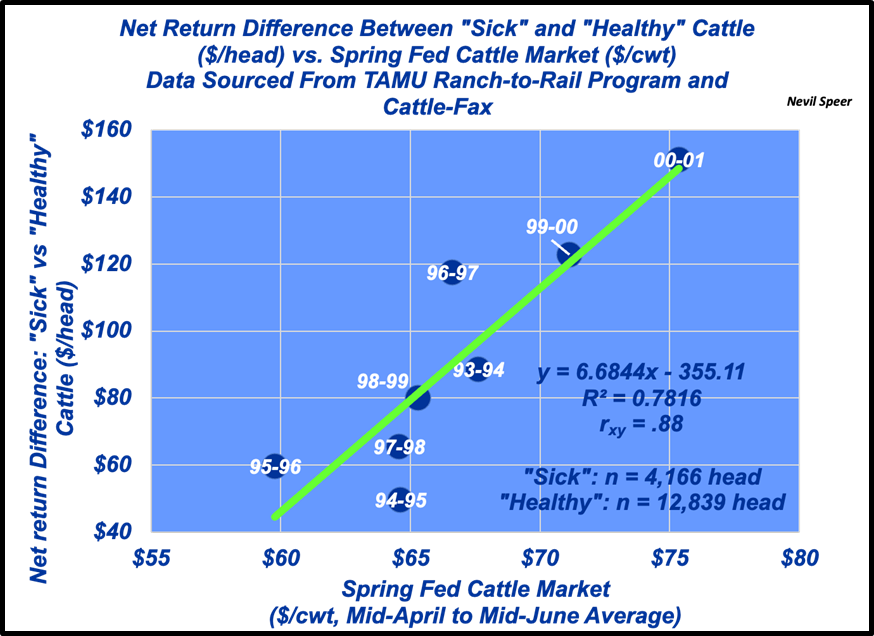Speer: Timeless Lessons About BRD Prevention From TAMU’s Ranch-to-Rail Program

TAMURR: Fall is upon us. That means cattle feeders are busy receiving and starting calves. Unfortunately, treating sick calves goes along with all that. It requires lots of time and energy; and it also represents a huge value shortfall for the industry.
One of the most important demonstrations of that reality comes from the Texas A&M Ranch-to-Rail Program (TAMURR). The program ran for nine years. And while the results are dated (the program running between 1992 and 2001), the principles remain the same.
Sick vs. Healthy: The table below details difference in profitability among cattle that remained “healthy” through the feeding period (never pulled for treatment) versus those that required at least one treatment (“sick”). The direct cost of BRD includes morbidity rate, treatment expense, mortality and realizer incidence, feed costs, reduced performance (due to both clinical and sub-clinical BRD), calf purchase and sale price, and various carcass grid premiums/discounts.
Treated cattle consistently possessed higher production costs and poorer feedlot performance. Simultaneously, “sick” cattle also produced carcasses with lower marbling scores and USDA quality grades. Over the course of nine years, calves remaining “healthy” throughout the feeding period returned nearly $100/head more than those categorized in the “sick” category.

Market: But the detail stretches even further. The primary factor explaining the profit differences associated with morbidity status (“sick” vs. “healthy”) and net return is dictated by the respective level of the fed market. That is, the higher the market, the bigger the impact of sickness on net return.
That relationship is due to several key factors. First and most obvious, increased morbidity leads to increased mortality; higher fed market values generally translate to higher costs of feeder cattle on the front end. Second, grid premiums/discounts are also tied to the market and BRD generally results in reduced marbling.
The derived regression equation from the TAMU data reflects the value of “sick” versus “healthy” cattle in relation to the cash market. (see graph below) Does that same regression fit in this market environment? It’s a big stretch to extrapolate from a $70 to a $180 fed market. But the principles remain the same. Clearly, sick cattle represent a very expensive proposition in the current market environment.

Indirect Costs: None of the discussion above accounts for indirect costs associated with the occurrence of BRD in newly received cattle. For example, NCBA’s Strategic Alliance Field Study estimated that for every calf pulled from its pen for treatment there are likely two calves that experience sub-clinical illness. Similarly, both Wittum and Gardner reported lung lesions in cattle that were NOT treated for BRD.
Meanwhile, doctoring calves can prove frustrating and unrewarding while also eroding feedyard productivity. Those indirect costs need to be accounted for when accounting the total influence of sick cattle.
Timeless Lessons: Challenges associated with BRD hasn’t subsided. If anything, it’s gone the other way. To that end, TAMURR documents some timeless lessons for the industry. Given the value of the current fed market, widening quality grade spreads and longer feeding periods across the industry (another column for another day), the importance of preventing sickness has never been more important.







